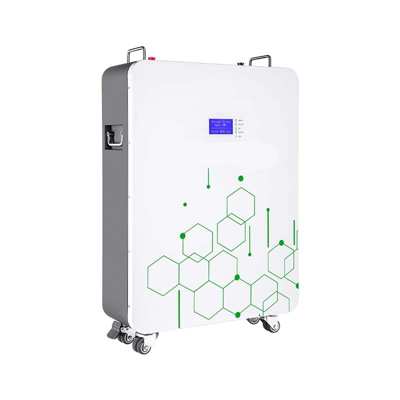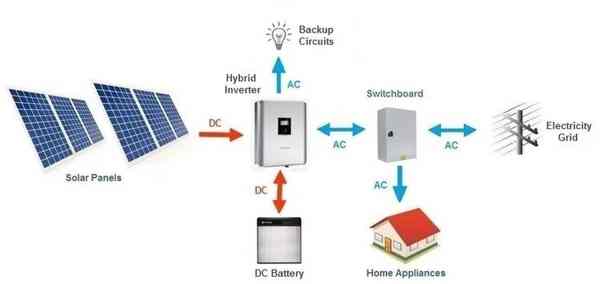Libérer le potentiel du support mural avec batterie de secours
Vous craignez que des coupures de courant perturbent votre vie ou votre entreprise? Les sauvegardes standard sont volumineuses et gaspillent de l'espace. Un support mural avec batterie de secours permet d'économiser de l'espace et offre un nettoyage propre., puissance fiable.
Un support mural avec batterie de secours est un système de stockage d'énergie compact, utilisant généralement la technologie lithium-ion, fixé directement sur un mur. Il est conçu pour économiser de l'espace au sol tout en fournissant une alimentation fiable aux maisons ou aux entreprises en cas de panne ou pour le stockage de l'énergie solaire..

J'ai installé d'innombrables systèmes, et le "support mural" la décision est importante. Ça a l'air élégant, mais ce n'est pas seulement une question d'esthétique. Cela change la façon dont vous gérez votre espace et votre alimentation. Pour voir si cela vous convient, nous devons le comparer à l'autre option principale.
Montage mural ou montage en rack: quel type d'installation vous convient?
Confus au sujet des types d'installation de batterie? Choisir le mauvais signifie gaspiller de l’espace ou créer un cauchemar d’installation. Comparons clairement le support mural et le support en rack pour trouver votre solution idéale.
Les supports muraux se fixent à un mur, gain de place au sol et idéal pour les zones résidentielles ou les petites zones commerciales. Les supports de rack se glissent dans un rack ou une armoire de serveur standard, parfait pour les entreprises ou les centres de données qui ont besoin d'empiler soigneusement de nombreuses batteries au même endroit.

Quand je consulte des clients, la première question concerne toujours l'espace. C'est là que le mur contre. la décision du rack commence.
Comprendre l'espace
UN batterie de montage mural (comme un "powerwall") est fantastique pour l’esthétique et la préservation de votre surface au sol. Dans un garage ou une buanderie, le monter au mur le met à l'écart. C'est un single, souvent une unité tout-en-un.
UN batterie de montage à rack est différent. Ce sont des unités modulaires, souvent 2U ou 3U de hauteur, conçu pour s'adapter à un rack de serveur standard de 19 pouces. Je les vois tout le temps dans des projets commerciaux ou pour des clients résidentiels qui disposent d'une armoire informatique ou d'un rack de serveur dédié..
Différences d'évolutivité
L'évolutivité est un autre point clé.
- Supports muraux: Souvent évolutif, mais tu es limité par l'espace mural. Vous pouvez ajouter une deuxième ou une troisième unité côte à côte.
- Supports en rack: Très évolutif. Il vous suffit de glisser une autre batterie dans un emplacement vide du rack. C’est leur principal avantage pour les besoins de grande capacité.
En tant que fournisseur, nous offrons les deux. Les grossistes préfèrent souvent les supports en rack pour leur flexibilité, tandis que les utilisateurs résidentiels aiment l'aspect épuré d'un support mural.
Quelles sont les principales différences entre les batteries à montage mural et celles à montage en rack?
Les batteries murales et rackables semblent-elles identiques? Choisir uniquement en fonction de l'apparence peut entraîner des problèmes de capacité ou d'installation.. Décomposons les différences techniques qui comptent vraiment.
Les principales différences sont le facteur de forme (plat/mur vs. modulaire/rack), refroidissement (les supports muraux utilisent souvent un refroidissement passif; les racks peuvent nécessiter un flux d'air actif), et évolutivité. Les supports en rack sont conçus pour un empilage dense, tandis que les supports muraux donnent la priorité à un format mince, profil peu encombrant.

Au-delà de la forme, la conception de ces batteries affecte leurs performances et la façon dont nous les installons. J'ai vu les deux types en action, et les détails sont importants.
Facteur de forme et refroidissement
Un support mural pour batterie de secours est généralement large et mince. Cette conception l'aide à dissiper la chaleur sur une plus grande surface, utilisant souvent uniquement un refroidissement passif (pas des fans). Cela les rend très silencieux, ce qui est un gros plus pour les installations résidentielles.
Les batteries montées en rack sont compactes et profondes. Quand tu empiles 10 d'entre eux dans une armoire, ils génèrent beaucoup de chaleur concentrée. C'est pourquoi ils ont souvent des ventilateurs intégrés, et le rack ou l'armoire lui-même a généralement besoin d'un plan de ventilation.
Environnement d'installation
Voici une comparaison simple des endroits où je recommande habituellement chaque type:
| Fonctionnalité | Support mural pour batterie de secours | Batterie de montage en rack |
|---|---|---|
| Meilleur emplacement | Garage, buanderie, mur du sous-sol | Baie de serveur, Placard informatique, centre de données |
| Utilisation de l'espace | Utilise l'espace mural, économise de l'espace au sol | Utilise l'espace au sol (à l'intérieur d'une armoire) |
| Esthétique | Haut (conçu pour être vu) | Faible (conçu pour être dans une armoire) |
| Refroidissement | Souvent passif (calme) | Souvent actif (fans) |
| Capacité | Bien (Par exemple, 5-15 kWh) | Excellent (facilement fini 100 kWh) |
En tant que fournisseur, nous fournissons la personnalisation. Nous pouvons aider les développeurs à concevoir des solutions basées sur rack pour l'ensemble d'un bâtiment., ou aidez un propriétaire à choisir le support mural parfait.
Quelles sont les exigences d'installation et d'entretien pour un support mural avec batterie de secours?
L'installation d'une batterie à montage mural est-elle un simple travail de bricolage? Une erreur peut être coûteuse ou dangereuse, et vous pourriez annuler la garantie. Passons en revue les exigences réelles d'un coffre-fort, installation efficace.
L'installation nécessite un électricien qualifié. L'unité doit être solidement ancrée à un support structurel solide. (comme des poteaux muraux). L'entretien est minime, généralement il suffit de le garder propre et de vérifier les connexions, car les batteries au lithium modernes n'ont pas besoin de recharges de liquide.

Je ne saurais trop insister sur ce point: ce n'est pas un projet de week-end. Alors que le concept c'est simple, l'exécution doit être professionnelle.
Le processus d'installation
D'abord, l'emplacement est la clé. Nous avons besoin d'un mur solide, comme du béton ou un avec des montants en bois solides. Ces batteries sont lourdes. UN 10 L'unité kWh peut peser 100 kg. Nous devons trouver un emplacement structurellement solide et répondant aux exigences de dégagement de la batterie pour le refroidissement..
Vient ensuite le travail électrique. La batterie s'intègre à votre panneau électrique principal et, si tu en as un, ton onduleur solaire1 (comme un modèle Growatt ou Huawei que nous fournissons). Cela implique câblage haute tension2 et doit être codé par un installateur certifié.
Entretien à long terme
Voici la bonne nouvelle. Contrairement aux anciennes batteries au plomb, un support mural au lithium, c'est presque "le régler et l'oublier"."
- Pas d'"arrosage": Ce sont des unités scellées.
- Nettoyage: Essuyez simplement la poussière du boîtier de temps en temps.
- Surveillance: Le système de gestion de batterie intégré (GTC) fait le dur travail. Il équilibre les cellules et protège des problèmes.
- Chèques: Un contrôle annuel par un professionnel est une bonne pratique, juste pour inspecter le câblage et les connexions.
C’est un énorme argument de vente pour les propriétaires et les entreprises qui veulent simplement une énergie fiable sans le
tracas.
Quelles sont les meilleures solutions de secours par batterie UPS à montage mural pour une alimentation fiable?
Besoin 24/7 protection de l'alimentation? Les sauvegardes de base échouent lorsque vous en avez le plus besoin, ou ne s'intègre pas avec l'énergie solaire. Examinons les solutions modernes qui offrent une, puissance de sauvegarde fiable.
Les meilleures solutions sont souvent appelées « hybrides »" systèmes. Ceux-ci combinent une batterie au lithium murale avec un onduleur hybride. Cela vous permet de stocker l'énergie solaire et de l'utiliser en cas de panne., offrant une véritable indépendance énergétique au-delà d’un simple UPS.

Quand les gens disent "UPS," ils parlent souvent d'un petit boîtier pour un ordinateur. Une batterie à montage mural élève ce concept à un nouveau niveau. C'est un UPS pour toute la maison.
UPS VS. Batterie solaire
Un UPS traditionnel (Alimentation sans interruption) fournit simplement une alimentation à court terme à partir d'une petite batterie. Un système de stockage d’énergie mural (Es) c'est bien plus.
Quand je conçois une solution pour un client, J'associe un LFP de haute qualité (Phosphate de fer au lithium) batterie avec un onduleur puissant. C'est le "cerveau" du système.
- Lié à la grille: Au cours de la journée, tu utilises l'énergie solaire. La nuit, tu utilises la grille.
- Lié au réseau avec sauvegarde: Vous utilisez l'énergie solaire, stocker un supplément dans la batterie, et utiliser la batterie la nuit. Si la grille échoue, la batterie prend le relais et alimente votre maison.
- Hors réseau: Vous êtes totalement indépendant.
Notre rôle en tant que fournisseur
Nous sommes spécialisés dans la construction de ces solutions complètes. Nous fournissons la haute qualité batteries à lithium3, le niveau supérieur panneaux solaires (comme LONGi et Jinko), et les onduleurs intelligents (comme Growatt et Huawei). Nous aidons les installateurs et les développeurs à créer un seul, système fiable. Pour un utilisateur résidentiel, cela signifie que vos lumières restent allumées. Pour un client commercial, cela signifie que vos opérations ne s'arrêtent jamais.
Conclusion
Une batterie à montage mural est une solution intelligente, un moyen peu encombrant d'obtenir une alimentation fiable. C’est flexible et nécessite peu d’entretien. Concevons ensemble votre solution énergétique idéale.
Comprendre les onduleurs solaires est crucial pour optimiser l’efficacité de votre système d’énergie solaire. ↩
L'exploration des normes de sécurité pour le câblage haute tension garantit la conformité et la sécurité des installations électriques. ↩
Explorez ce lien pour comprendre comment les batteries au lithium améliorent les systèmes d'énergie solaire, garantir l’efficacité et la fiabilité. ↩
